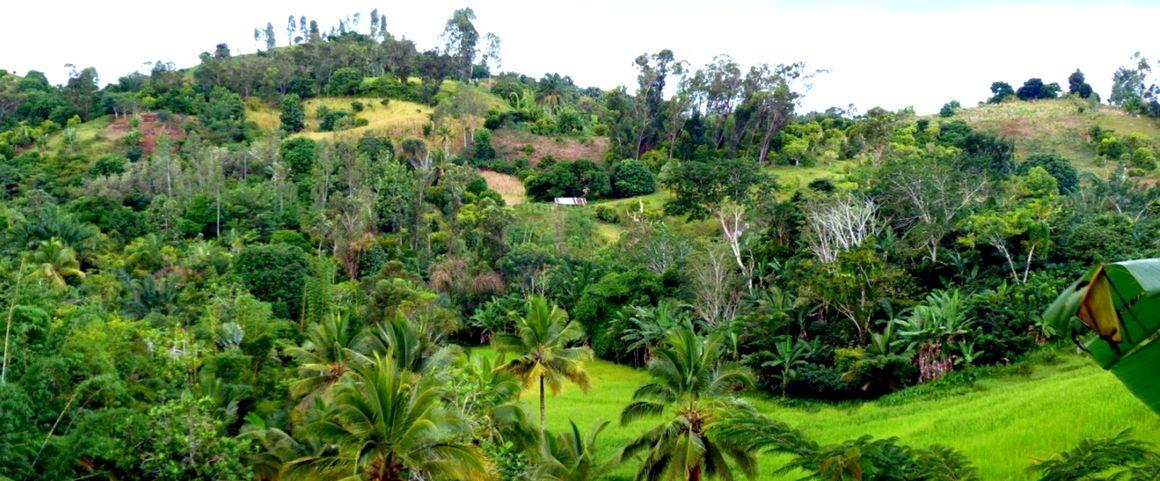This is the outcome of a large-scale synthesis review conducted by a Franco-Dutch research team, including a compilation of the results of 95 meta-analyses, 5,156 studies and 54,554 experiments spanning 85 years and representing more than 120 crop species in 85 countries.
Crop diversification was found to enhance crop production by 14% and associated biodiversity by almost 25%. Water quality was improved by 50%, pest and disease control by over 63% and soil quality by 11%.
The authors—scientists from CIRAD, INRAE and VU University Amsterdam—distinguished between the diversification strategies implemented, while highlighting the excellent performance of agroforestry-based systems.
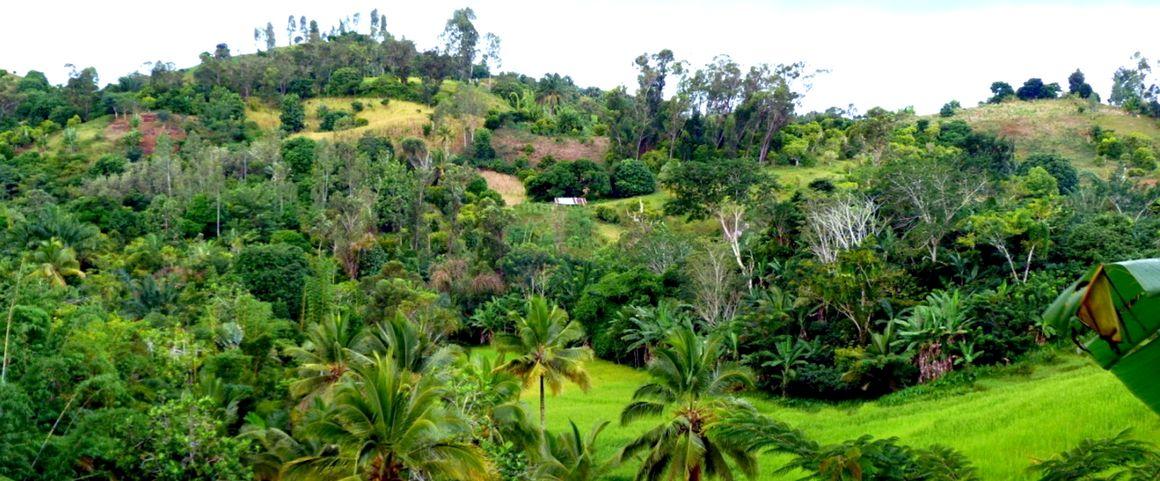
The article, published in Global Change Biology on 18 July 2021, assembles for the first time a substantial body of empirical evidence on the positive impacts of cultivated biodiversity on agroecosystems. The first author Damien Beillouin, a CIRAD agronomic data analysis specialist, stresses the scope:
“Most studies to date have been scattered. Here we synthesised the quantified impacts of over 5,000 field studies from across the globe, from 1936 to now.”
The scientists outline the impacts of five major cropping system diversification practices according to the spatiotemporal features of the diversification process, namely:
- Agroforestry: woody vegetation (e.g. trees or shrubs) is incorporated in crop or livestock farming systems. Some examples are: alley cropping, crop fields surrounded by hedgerows, agroforestry stands, shade-grown perennial crops, etc.
- Intercropping: mixtures of crops are grown in the same field, including relay cropping (crops sown in mulch from the previous crop).
- Variety mixtures: several varieties of the same crop species are grown simultaneously in the same field.
- Crop rotation: a recurring sequence of a diverse range of selected crops are grown in the same field according to a preset time cycle (regular succession of cash crops).
- Cover-crop systems: plants are grown for their diverse agronomic and environmental benefits to complement the main crop, e.g. cover crops, and borders surrounding crop fields.
The researchers conducted a statistical analysis of all available experimental data and found that these diversification strategies led to a median increase of 24% in associated biodiversity—the non-cultivated biodiversity that prevails within an agroecosystem. The increase also concerned crop production (+14%), as well as the provision of several ecosystem services, such as water regulation (+51%) and soil quality (+11%), or pest and disease control (+63%).
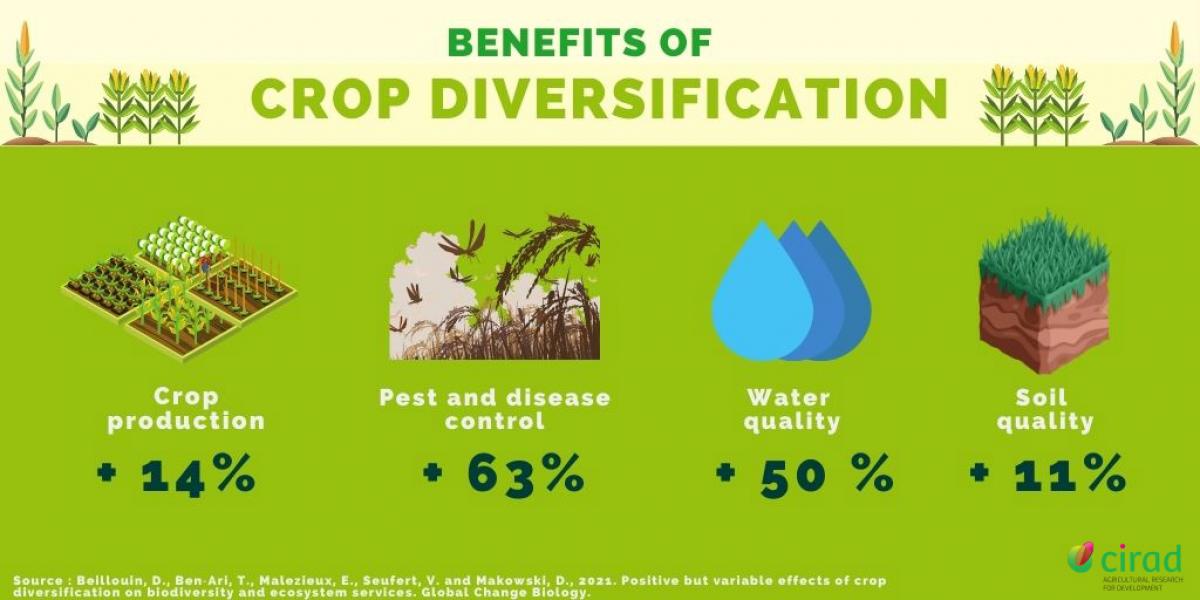
Agroforestry: the most effective strategy
The researchers highlighted that some cropping system diversification practices are more effective than others.
“Agroforestry systems improve associated biodiversity by about two-thirds, compared with just over a third for crop rotations and less than a quarter for systems with plant cover,”
says Damien Beillouin.
“Intercrops and variety mixtures have a lesser impact, with an average increase of 7% and 2%, respectively.”
Agroforestry also outperformed other strategies regarding crop production (median increase of +35%, i.e. much higher than the +22% increase estimated for intercropping) and soil quality (+19%, compared to +11% for intercropping). The best pest and disease control results were obtained by cover crop systems (+ 125%), followed by intercropping (+ 66%) and agroforestry (+ 59%) systems. Agroforestry performances varied according to the practices studied, i.e. from +84% for the use of hedgerows to +40% for shade-grown perennial crop systems.
Impacts of cropping system diversification strategies, from Beillouin et al. 2021
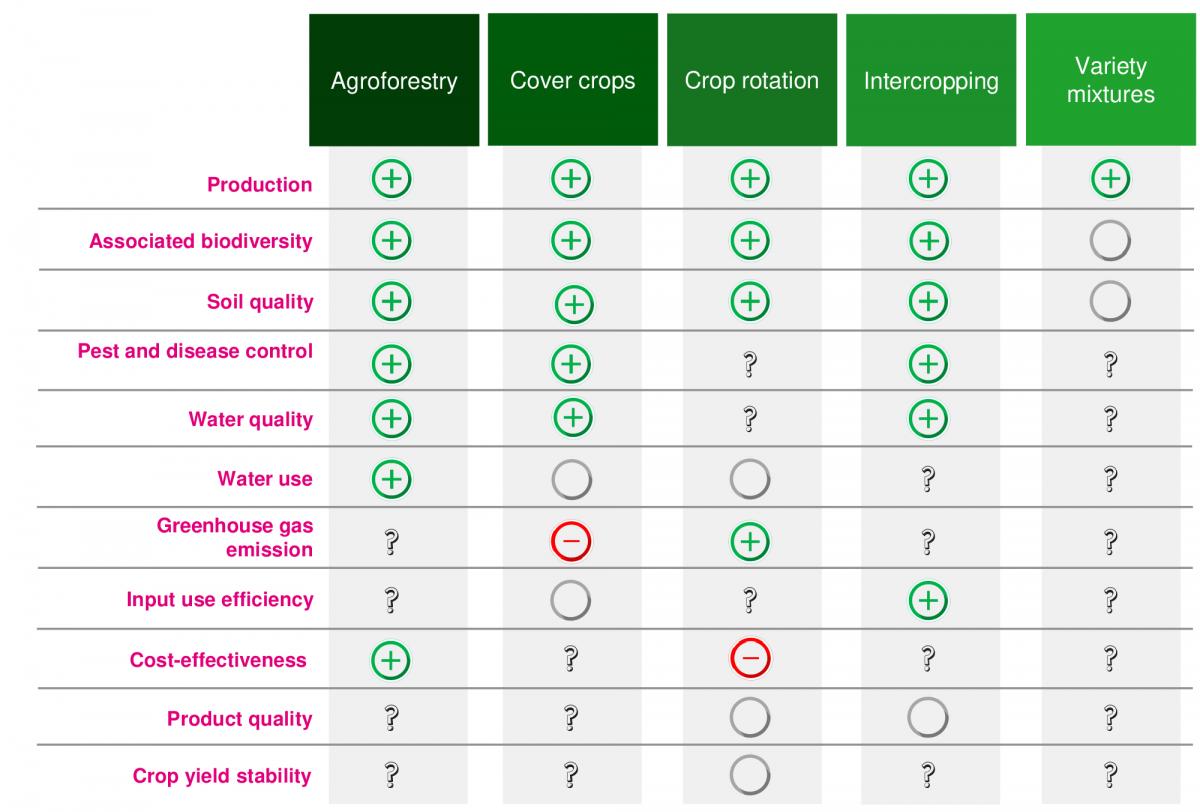
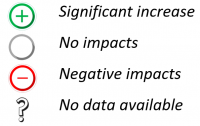
“Agroforestry strategies also contributed most to soil carbon storage, and hence to climate change mitigation”, says Damien Beillouin. “Soil carbon content was 19% higher on average in agroforestry systems than in fields under similar conditions, but without trees. However, intercropping and cover-crop systems were not far behind, with an increase of 13%.”
Agroforestry therefore seems to be the most promising diversification strategy in terms of the provision of a range of ecosystem services. The authors pointed out the lack of available data, particularly concerning variety mixtures, but also the sparsity impact assessment data on cost-effectiveness and production stability.

This research has received substantial funding from the European Union Horizon 2020 programme under grant agreement N° 727482 (DiversIMPACT) – www.diverimpacts.net
Reference
Beillouin, D., Ben‐Ari, T. (EMS Team, DCFE department), Malezieux, E., Seufert, V. and Makowski, D., 2021. Positive but variable effects of crop diversification on biodiversity and ecosystem services. Global Change Biology.
Find out more
Precise figures available in the free online open access database
Research units
In the media
See also
Pesticides: global consumption is increasing despite 60 years of integrated crop protection
Contact
Press contacts
presse@cirad.fr – Tel.: +33 7 88 46 82 85
presse@inrae.fr – Tel.: +33 1 42 75 91 86
Scientists
Damien Beillouin
CIRAD, Montpellier
E-mail
David Makowski
INRAE, Centre Ile-de-France Versailles-Grignon
E-mail
